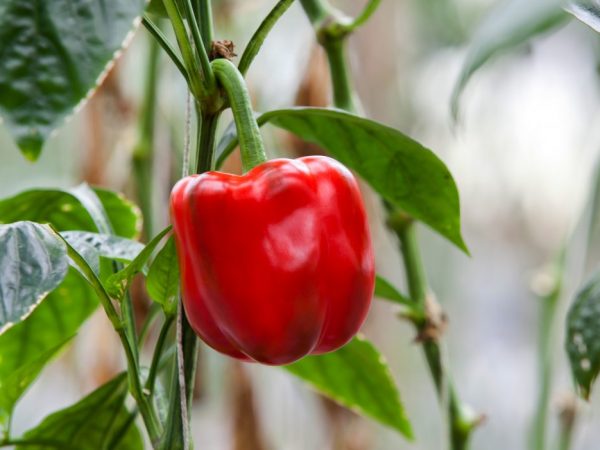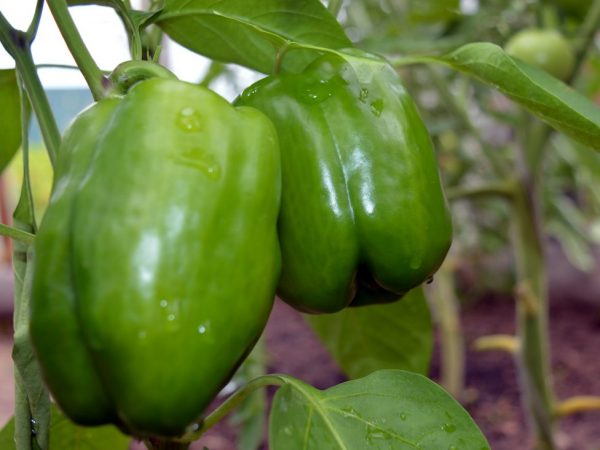Temperature range for pepper
The cultivation of sweet peppers is practiced everywhere today. Plants are demanding to care for, so it is important to observe the temperature regime for the pepper.

Temperature range for pepper
Temperature regime
Many gardeners often wonder what temperature peppers can withstand. The temperature regime for seedlings and mature plants is different. Hardened seedlings are more resistant to low rates than plants that have not passed this stage. The former will be able to survive even a decrease in the column to a mark of - 2 ° С, while plants that are not acclimatized will die already at 0 ° С.
When the temperature drops below 13 ° C, the seedlings stop growing. When the thermometer shows 7 ° C, then slight frosts are already noted on the ground. The low temperature also affects the fruiting of the vegetable: the number of fruits and their quality indicators.
Seedling
Seedlings are the most vulnerable to frost. Young bushes have a fragile root system and cannot resist weather conditions. That is why plants in the stage of active growth turn black and shed their foliage when the temperature drops. The minimum temperature that the seedlings can withstand after planting in the ground is 5 ° C
The optimum temperature for high-quality growth of seedlings and germination of pepper seeds is 19 ° C. In order for the plants not to suffer from the minimum temperatures during planting, it is recommended to temper them.
The procedure should be started only after most of the seedlings have formed 4 true leaves. Basic rules to follow when hardening:
- The air temperature at the time the plants take air baths should be at least 15 °.
- Plant pots should be taken indoors. Greenhouses equipped on the street will only need to be opened.
- The first contact with low temperatures should last no more than 15 minutes.
- On the second day, you can keep the plants in the air for about 20 minutes.
By the end of the second week, under favorable weather conditions, the seedlings can remain in the air throughout the daylight hours. With the onset of dusk, the nurseries should be covered. If night frosts are expected with air temperatures below 5 °, then greenhouses can be additionally insulated with spandbond.
Mature plants

Plants must be protected from frost
The optimum temperature for planting pepper in a permanent place should be at least 15 ° during the day. The thermometer at night should be at 12 °. It is not worth planting plants at a lower temperature, since there is a high risk of plant death.
After planting the seedlings in a permanent place, it is recommended to create the conditions familiar to the seedlings for some time. There are several options that can save plants during the period of active growth:
- Cover the cut-off bottom of the seedlings with plastic bottles. The containers should only remain on the bushes at night, because during the day the plants can suffocate or deteriorate from the steam.
- Stretch agrofibre over the bed.White material can be left even during the day.
- Cover the beds with portable domes made of transparent oilcloth. Attachments should be installed in the evening and removed early in the morning.
- Arrange tree branches with foliage around the bushes. They will not only help protect the seedlings from a drop in temperature at night, but also play the role of a fence: curious birds will not be able to damage the seedlings.
Frost-resistant varieties and hybrids
For areas with short daylight hours, as well as short spring, varieties and hybrids were bred, the plants of which are frost-resistant. The best of them, zoned for cultivation in the Moscow region, in the Urals and in the southern part of Siberia, are listed below:
- Bogatyr
- Yellow bull.
- Gingerbread man.
- Red Bull.
- Wizard.
- Merchant
- Swallow.
- Montero.
- Novosibirsk.
- Pioneer.
All these varieties differ not only in frost resistance, but also in early maturity. The yield from each bush of any of the above species, with proper care, can reach 2.5 kg. Most of the fruits are large and thick.
Conclusion
Pepper is a heat-loving plant. The plant bears fruit well in warm regions with sufficient rainfall or artificial irrigation. Thanks to the efforts of breeders and their development of frost-resistant varieties and hybrids, plants can be seen in gardens and greenhouses in many regions. Their landing in open ground will depend on the weather.


